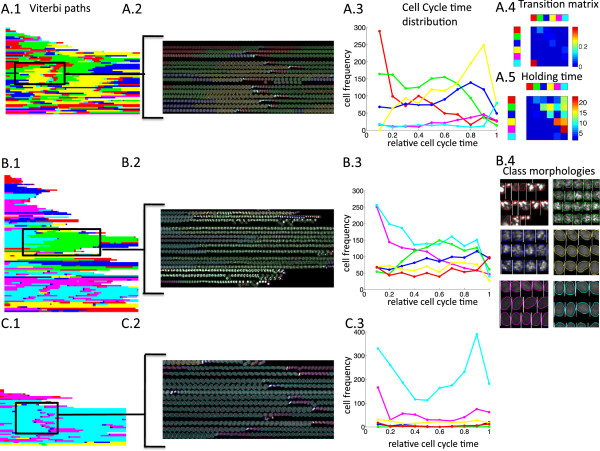Figure 2.
Phenotyping of cell morphologies. Wild type movie (A), PLK1 knockdown (B), PLK1 negative control (C). A.1 shows the Viterbi paths for all trajectories of a movie (paths were padded with zeros and sorted using hierarchical average linkage clustering with hamming distance, 60 trajectories). Cells labelled with their phenotype class annotation are shown in A.2. Cell cycle time distribution for every phenotype class is shown in A.3. HMM transition matrix is shown in A.4 (diagonal entries are deleted for better visualisation). The median time a cell stays in a certain phenotype class before changing to another phenotype class is shown in A.5. The red state occurs early in the cell cycle whereas the turquoise state peaks at a late cell cycle time (A.3). These states can be identified as the growth state after mitosis (red) and mitotic state (turquoise) (A.2). The HMM transition matrix has a large probability for the transition from the turquoise to the red state. Same plots as in A.1–A.3 are shown in B.1–B.3 for the PLK1 knockdown (96 trajectories) and in C.1– C.3 for the negative control (42 trajectories). The HMM was learned on the pooled trajectory set of both movies. PLK1 class morphologies can be seen in B.4. The HMM automatically extracts knockdown-specific phenotypes (B.4, green, blue, red state).

